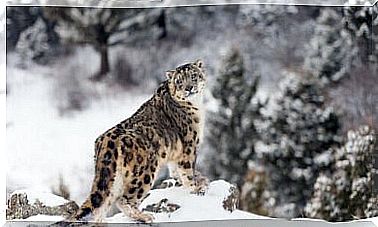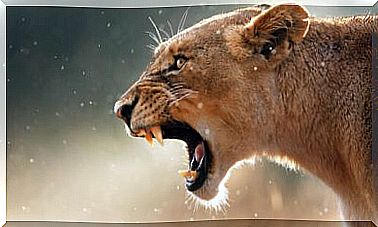Types Of Mimicry In The Animal World
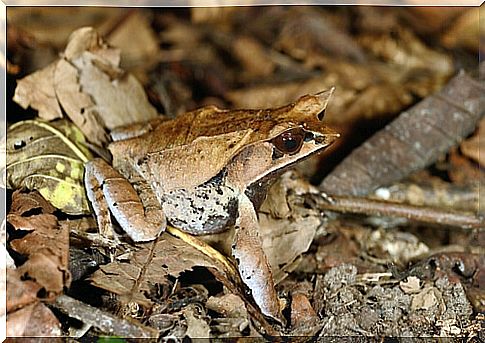
Mimicry is defined as the ability of some living beings to resemble other organisms, be they animals, fungi or plants in the environment.
This tactic is based on gaining an advantage by tricking or confusing other beings to avoid predation, facilitate parasitism, or attract prey. This can be achieved in different ways, either by adopting different postures or by resembling other more feared beings.
Mimicry is the best example we can use to explain natural selection. Next, we will tell you more about the different types of mimicry that exist.
Types of mimicry
Mimetic signals can be:
- visuals,
- acoustics,
- chemical,
- touch.
Depending on how this phenomenon is experienced, up to 5 different mimicry models are known in nature.
Batesian mimicry
The term “Batesian” honors the first person to study this type of mimesis, Henry Walter Bates, during his trip to the Amazon in 1848.
Bates observed that the harmless butterflies of the Pieridae family mimicked the colors and shapes of the Heliconid butterflies in this region, which had toxins that gave them an unpleasant taste. Thus, when a predator tried to attack them, they remembered that horrible taste that the toxic butterflies they resembled gave off and avoided them.
Therefore, the animals that experience this mimicry are those that morphologically resemble a species that is disgusting, toxic, or dangerous. In this way they manage to deceive their natural predators.
Another example is the one that occurs between the coral snake, an extremely poisonous animal, and the false coral snake. The mimic has a distribution and coloration of the rings so similar to the dangerous species that they are impossible to differentiate for its attackers.
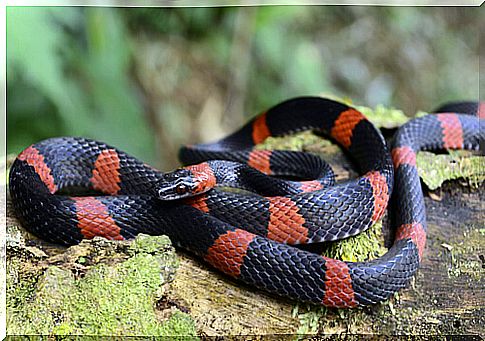
Müllerian mimicry
In this case, two or more different species (with similar appearance and sharing the same predator) develop a common characteristic, such as poison or bad taste.
This will allow that, at the moment in which the predator tests an individual of any of the species, discover this unpleasant characteristic and directly feel rejection by all those that resemble it at first glance.
In this way, in this collaborative mimicry all species benefit. The advantage is not only to evade the predator: thanks to this teamwork the animals of these species can be found in abundance and occupying various habitats by reducing their number of attackers.
Aggressive mimicry
In this example of mimicry, the animal manipulates the behavior of its potential prey: predators resemble a harmless or weaker being with which they are not related, to attract said prey and be able to attack it easily.
For instance:
- The praying mantis of the Hymenopodideae family resembles a flower in color and shapes to attract prey (pollinating insects).
- There are also spiders that mimic attractant pheromones from female moths to attract male moths, which will serve as food for them.
Automatism
The beings that self-mimic disguise a part of their body imitating another that is more delicate and at the same time vital for their survival, such as the head. In this way, they direct the attack of predators to a more expendable or resistant area of the body and thus manage to escape from them.
There are numerous insects that experience this phenomenon, such as the butterflies of the subfamily Thedeclinae, which use this defense mechanism with the tips and patterns of their wings. When they land on a surface they do so with their heads down and they begin to flap in a way that creates the sensation of a false head on their wings .
Aposematism
Finally, aposematism is a term that is used to describe the cases in which animals that are harmless acquire warning traits similar to those of others that are dangerous and feared. These can be bright colors or based on the emission of acoustic and chemical signals that animals use to scare off enemies.
We can observe it in cases such as caterpillars that present spectacular spots that simulate large and dangerous open eyes.
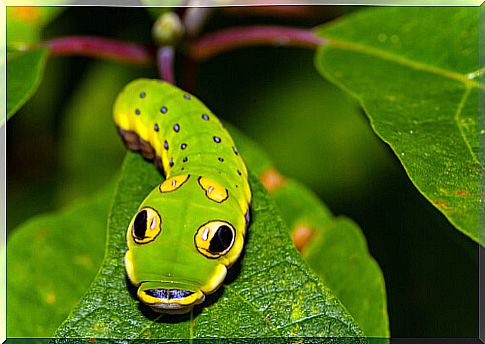
Evolution is linked to mimicry
Throughout this space we have discovered a true art of deception: mimicry. This spectacular phenomenon is used by numerous beings to protect themselves and guarantee their survival.
And not only that: the success of this ability allows mimetic animals that manage to avoid their predators to procreate and give rise to offspring. In this way, these very useful characteristics will be inherited in the following generations and therefore the species that last over time will be those that possess these adaptive traits.



